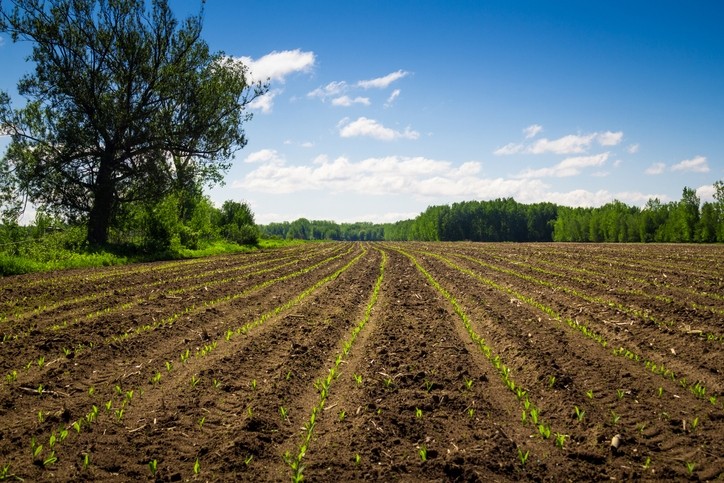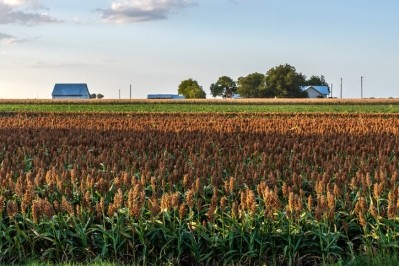USDA: Feed crop production sees forward momentum following delay

The US Department of Agriculture (USDA) released details of feed crop and other planted production on Monday [June 10].
In some feed crop producing states there continues to be a consideration that not all of the expected corn acres will be planted, said Jonathan Kleinjan, Extension crop production associate with South Dakota State University.
Producers in South Dakota faced a wet autumn, followed by high snowfall, he told us. “This spring once the snow melted we had a lot of water – [and it] never seemed to warm up,” he added.
“We’d get a few days of nice weather followed by four days of rain,” he said. “A lot of the state, especially in the south central [part of the state], wasn’t able to get into the fields until last week.”
The anticipation is that producers in some part of the state may only plant about 40% of what was anticipated, although other parts of the state were able to plant more acres, he said. “The best guess is about 20-30% of the corn in South Dakota won’t be planted this year,” he added.
However, last week marked improvement in planting conditions across the state, Kleinjan said.
The anticipation is that corn producers who planted in the first week of June could see some loss in yield, but soybean planting is expected to continue through at least June 20, he said. It is unclear how many unplanted corn acres will be changed to another feed crop like soybeans.
“Typically, in South Dakota corn will start planting corn in the middle to end of April and wrap by May 10 to 15 and soybeans start May 1 and [will be] done by June 1 with some stragglers,” he said. “But this year we’re just kind of getting started when we’re usually ending – we’re going to learn something this year.”
Corn and soy production
Overall, corn planting saw a jump forward although the pace still trails previous years, the USDA reported. In total, about 83% of the crop has been planted, down from the 99% planted by the week ending June 9 on average.
With 50% of its crop in the ground, Ohio trails other corn producing states in terms of planting, the department said. However, only North Carolina and Texas have finished planting.
Corn Belt states including Illinois, Indiana, Iowa, Minnesota and South Dakota had all completed their planting by this point last year, the department said. This year the amount of the feed grain planted varies, with states having 73%, 67%, 93%, 92% and 64% of the crop in the ground, respectively.
Corn emergence is somewhat slower, with about 62% of the crop spouting, as opposed to the 93% visible by this time last year, the department said. However, last week only 46% had emerged.
States, where less than half of the crop has sprouted, include Indiana, Michigan, Ohio, South Dakota and Wisconsin, the department added.
Soybean planting also saw some improvements with the total amount of the crop planted jumping from 39% to 60% in a week, the USDA said.
However, several states have yet to get at least half their crop in the ground, the department said. These include Illinois, Indiana, Kansas, Michigan, Missouri, Ohio and South Dakota.
The only state ahead of where it was at this point last year is North Carolina, which has planted 68% of its soybean crop – up from 66% at this point last year, the department said.
About 34% of the soybean crop has sprouted, down from 81% that had emerged at this point last year, the department said. Louisiana and Mississippi have seen the most progress in their crop, while Ohio and South Dakota have seen the least.
Wheat growth and planting
The winter wheat crop continues to mature, with about 83% of the crop reaching the headed state, the USDA said. Last year about 90% of the crop had developed to that point at this time and on average, about 91% had reached that stage.
Four states have seen the entire crop reach that point of maturity and only Montana has yet to see any of the crop hit that stage, the department said. Four states also have seen harvest start, although only about 4% has been collected.
Condition for the grain remains higher than last year as about 64% of the crop is considered good or excellent, the department said. Last year at this time about 38% of the crop earned those scores.
Planting of the spring wheat crop is almost complete, with about 97% of the crop in the ground, the USDA said. However, of the six states responsible for the majority of the acreage only one has completed planting.
Sorghum, oats and barley
Sorghum planting has reached almost the halfway point with about 49% of the crop planted, the USDA said. Last year, at this time, about 77% of the crop was in the ground.
Texas has made the most planting progress with about 90% of its crop planted, the department said. However, South Dakota made the most progress with planting improving from 8% last week to 44% this week.
Planting has almost finished for the oat crop as about 96% of the acres have been planted, the department said. Three of the nine states responsible for the majority of the crop have finished planting – Iowa, Pennsylvania and Texas.
Crop emergence also is nearing completing with about 87% of the crop sprouting, the department said. With only 70% of its crop out of the ground, Wisconsin is seeing the slowest development.
Barley planting is almost on par with the pace set previously as about 97% of the crop is in the ground, down from the 99% last year, the department said. The state with the least amount of its crop planted is Montana, which is 94% complete.
Crop sprouting also is close, if behind, past years with about 86% of the crop emerged at this point, the department said. Last year 91% of the crop was above ground.












